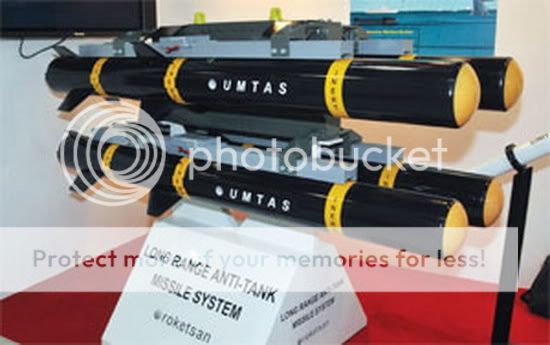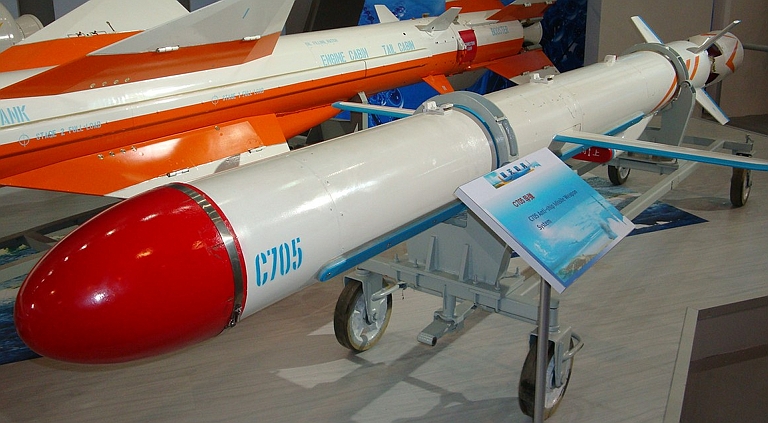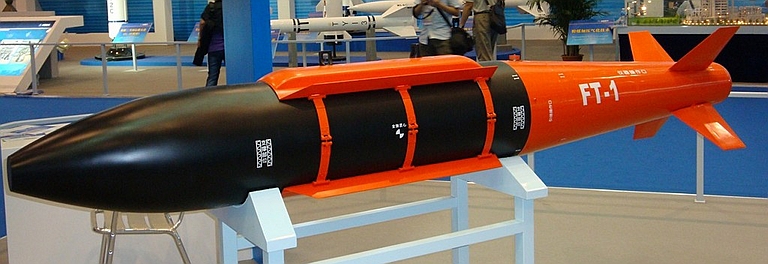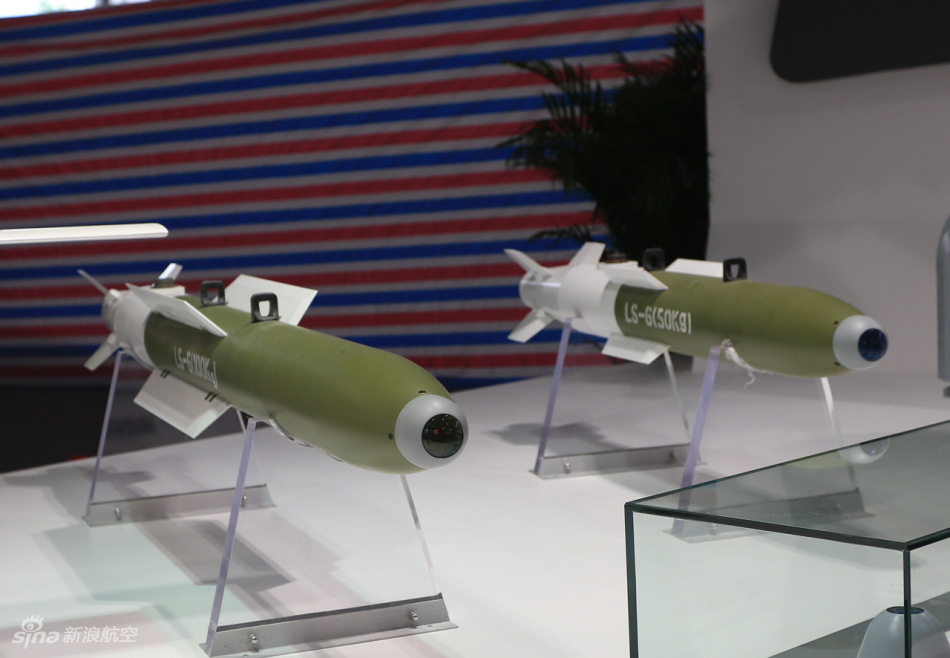How to install the app on iOS
Follow along with the video below to see how to install our site as a web app on your home screen.
Note: This feature may not be available in some browsers.
You are using an out of date browser. It may not display this or other websites correctly.
You should upgrade or use an alternative browser.
You should upgrade or use an alternative browser.
AGMs and Standoff Weapons
- Thread starter Manticore
- Start date
500
BANNED

- Joined
- Aug 18, 2010
- Messages
- 16,675
- Reaction score
- 38
- Country
- Location

The first unveiled test of JAGM missile:
It has tri-mode seeker (IR, microwave radar, laser) and intended to replace Hellfire, Maverick and Tow missiles.
The range is 16 km from helicopters and 28 km from fixed wing aircrafts.
Hakan
RETIRED INTL MOD

- Joined
- Feb 9, 2014
- Messages
- 6,271
- Reaction score
- 39
- Country
- Location
SOM Air Launched Cruise Missile (ALCM) Hits 300 km!
Designed, developed and manufactured by TüBiTAK-SAGE, Defence Research and Development Institute of Turkey, under a US$80 Million valued contract awarded by the Turkish MoND in March 2oo6, the SOM is a family of new generation, air launched non-nuclear, long range, fire and forget type precision strike missiles capable of defeating both fixed non-hardened and hardened land targets as well as moving sea targets. The 1.300 lb (600 kg) SOM ALCM’s airframe is designed with stealth capability provided by the shape of the airframe and the materials used in its construction, to give the missile a low detection probability and allow it to penetrate enemy air defence systems.
Under the project prototype missiles were manufactured in 2oo8 and following extensive wind tunnel and systems tests, captive-carry and release trials were performed from a F-4E 2o2o aircraft in 2o1o. 2o1o also witnessed first live firing test of SOM-A (INS/GPS + TRNS guided version) from a F-4E 2o2o aircraft. SOM-A aircraft release tests were also performed on a F-16D Block 40 in 2o11. SOM was first displayed aboard a TuAF F-16C Block 50 aircraft during the 100th year celebrations of the Turkish Air Force held at the 2nd MJB Command in Çiğli, Izmir during June 4-5 2o11. During a live firing test performed on August 9, 2o11 with F-4E 2o2o in Black Sea, SOM-A flew more than 100 nm (185km) before hitting its determined target with high accuracy. SOM’s first international debut was took place during DSEi Exhibition in London UK, where the full-scale mock-up of the missile was displayed at TüBiTAK-SAGE stand in September 2o11. The delivery of a first batch of missiles to the Turkish Air Force was supposed to take place by the end of 2o11. The TuAF requires “hundreds” of SOMs, and serial production of SOM missiles will be carried out by a Turkish Defence Industry company (MKEK and Roketsan are potential candidates) starting from 2o13 since TüBiTAK-SAGE performs only design and prototype production.
Though the missiles effective range was initially announced as 100 nm, (185km) speaking at the press meeting held at TüBiTAK Headquarters in Ankara on January 13, 2o12 to update press members on the recent developments on Turkey’s missile programs President of the TüBiTAK (The Scientific and Technological Researches Council of Turkey) Prof. Dr. Yücel ALTUNBAŞAK stated that they have been carrying firing tests with SOM missile up to the range of 300 km and during recent test missile has successfully hit its target at 300 km with circular error probable (CEPs) of 5 meters, even they had goaled 1om CEP. He went on saying, “We are planning to perform 500 km (air launched version, ALCM) range firing tests in 2o12 with SOM. Later the range will be extended to 1.500km and eventually to 2.500 km (surface launched versions, LACM) in 2o14.” ALTUNBAŞAK, also underlined that the order for the extended range missile program had come from Prime Minister Recep Tayyip ERDOĞAN.
Powered by a Microturbo TR-40 turbojet engine (in the 2.5 kN to 3.34 kN [560 lbf to 750 lbf) thrust class, the SOM is an indigenously developed high-subsonic cruise missile designed to meet Turkish Air Force requirements. Though it is smaller it shares several features with LFK KEPD-350 Taurus and MBDA Scalp/Storm Shadow missiles. SOM ALCM has three versions; SOM-A is equipped with INS/GPS guidance system plus Terrain Referenced Navigation System (TRNS/TERCOM) coupled with radar altimeter and has 230 kg HE type unitary warhead. SOM-B1 version also has HE type unitary warhead, whereas SOM-B2 is armed with dual-stage tandem penetrator and in addition to GPS/INS they both also employ Imaging Infrared Seeker (IIR, has cooled type 640x512 pixels detector) for enhanced terminal guidance plus TRNS/TERCOM, radar altimeter and Automatic Target Recognition (ATR) system. IIR seeker can be used to provide image-based midcourse navigation (IBN) by taking snapshots of waypoints and comparing them against predicted position to update the navigation system. Intended targets for the SOM ALCM are including command and control facilities, surface-to-air missile (SAM) sites, parked aircraft, hardened aircraft shelters (HAS), strategic assets and surface ships.
Design and development studies on SOM-A and SOM-B1 have been completed and works on SOM-B2 are scheduled to be completed by the end of 2o13.
TüBiTAK-SAGE is also working on a two way encrypted RF data-link capability, which will allow in-flight re-tasking against moving targets, for SOM missiles and planned to complete its studies until the missile enters serial production phase.
SOM can be carried internally by the F-35 Lightning II JSF, if the tail fins are folded and TuAF plans to deploy SOM ALCM on F-35As. For this purpose a number of TüBiTAK-SAGE personnel joined Turkey’s JSF Project Team.
The French Microturbo TR-40 turbojet engine, to be replaced with Kale Aero’s indigenous turbojet engine, GPS, INS, IIR detector, ATR sensor and radar altimeter have been sourced from abroad, but algorithms for ATA system, IIR seeker and TRNS have been developed by TüBiTAK-SAGE engineers. The fuel system and warheads on board the SOM ALCMs were also designed locally. TüBiTAK-SAGE has also developed a Mission Planning System, a digital flight control computer with a capacity for up to 50 waypoints and a thermal battery with a service life of 25 minutes for the SOM ALCM family.
SOM ALCM Specifications:
Weight: 600 kg (1.300 lb)
Length: 3.85 m
Warhead: 230 kg (500 lb) HE unitary or Dual Stage Tandem Penetrator
Engine: Microturbo TR-40 turbojet engine
Wingspan: 2.6 m (during flight)
Operational Range: 15onm, (500km will be tested in 2o12)
Cruise Speed: Mach 0.8
Guidance System: INS/GPS, TRNS/TERCOM, ATR, IIR, radar altimeter + two way RF data link
Launch Platform: F-4E 2o2o, F-16D and F-35A (planned)
Cirit Guided Missile (Pronounced Jirit)
Last edited:
Rahil khan
FULL MEMBER

- Joined
- Dec 3, 2011
- Messages
- 1,781
- Reaction score
- 0
- Country
- Location
The Ra'ad (Urdu: رعد, "Thunder") is an air-launched cruise missile (ALCM) developed by Pakistan and operational with the Pakistan Air Force (PAF). Though initially launched from a PAF Dassault Mirage III ROSE combat aircraft during testing, the missile is planned to be integrated with and launched from other PAF platforms such as the JF-17 combat aircraft.[2] The Ra'ad's current range is stated to be 350 km.[3]
Ra'ad is designed to attack fixed enemy installations (such as radar posts, command nodes and stationary surface to air missile launchers) at stand-off range, keeping the launching aircraft away from enemy air defence systems. The missile can also be armed with a 10-35 kt nuclear warhead.[1] The accuracy of the missile is reported to be comparable to Pakistan's Babur cruise missile, which has "pinpoint accuracy" according to official sources
After a successful test-launch in 2005 of the Babur (also known as Hatf VII), Pakistan's first cruise missile, it was stated by officials that the Babur would be modified to be launched from airborne platforms. But the Ra'ad, developed by Pakistan's Air Weapons Complex and NESCOM,[5] appears to be an entirely new missile, as is evident by the new name and a new official designation of Hatf VIII.
The Ra'ad's airframe is designed with stealth capability,[6][7] provided by the shape of the airframe and the materials used in its construction, to give the missile a low detection probability and allow it to penetrate enemy air defence systems.[3] Designed to carry conventional or nuclear warheads, the missile would most likely be used for precision air strikes on enemy command centres, radars, surface to air missile launchers, ballistic missile launchers and stationary warships.[8]
Ra'ad was tested for the first time on 25 August 2007. An official press-release by the military at the time of the test declared that the missile gave [URL='http://en.wikipedia.org/wiki/Pakistan_Air_Force']Pakistan Air Force a "strategic standoff capability on land and at sea," indicating that Ra'ad may be launched at sea-based targets such as ships, as well as land-based targets.[3][9][10]
On 8 May 2008, Ra'ad was tested for the second time, this time fired from a Dassault Mirage III ROSE fighter of the Pakistan Air Force (PAF).[11][12]
A third successful test of Ra'ad (ALCM) was carried out on 29 April 2011, this time again fired from a Dassault Mirage fighter of Pakistan Air force.[13][14][15] Fourth test of Ra'ad (ALCM) was carried out on 30 May 2012.
[/URL]
Hakan
RETIRED INTL MOD

- Joined
- Feb 9, 2014
- Messages
- 6,271
- Reaction score
- 39
- Country
- Location
Mizrak U Anti Tank Missile (old name was Umtas)

Turkey Tests Long-Range Anti-Tank Missile | Defense News | defensenews.com

Turkey Tests Long-Range Anti-Tank Missile | Defense News | defensenews.com
Mir Shahzain
FULL MEMBER

- Joined
- Jan 12, 2014
- Messages
- 173
- Reaction score
- 0
- Country
- Location
This UCAV is Burraq or CH-3 ???

YJ-12 AShM

CM502KG AGM

C-705 AGM

LD10 ARM

AR1 AGM
LD-10 is air to ground weapon ???
Manticore
RETIRED MOD

- Joined
- Jan 18, 2009
- Messages
- 10,115
- Reaction score
- 114
- Country
- Location
Hakan
RETIRED INTL MOD

- Joined
- Feb 9, 2014
- Messages
- 6,271
- Reaction score
- 39
- Country
- Location
J-600T Yıldırım - Wikipedia, the free encyclopedia
Yıldırım I: 150 km
Yıldırım II: 300 km
Yıldırım III: 900 km


Yıldırım I: 150 km
Yıldırım II: 300 km
Yıldırım III: 900 km


MilSpec
ELITE MEMBER

- Joined
- Feb 19, 2011
- Messages
- 12,922
- Reaction score
- 38
- Country
- Location
Similar threads
- Replies
- 9
- Views
- 2K
- Replies
- 1
- Views
- 1K
- Replies
- 43
- Views
- 5K
- Replies
- 56
- Views
- 7K
- Replies
- 0
- Views
- 704
Latest posts
-
India launches missile attacks on Multiple locations in Pakistan,
- Latest: RaktimChandra
-
-
-
Why Pakistan’s JF-17 Thunder Is Outshining India’s Tejas on the World Stage
- Latest: FourMikeEcho
-


























